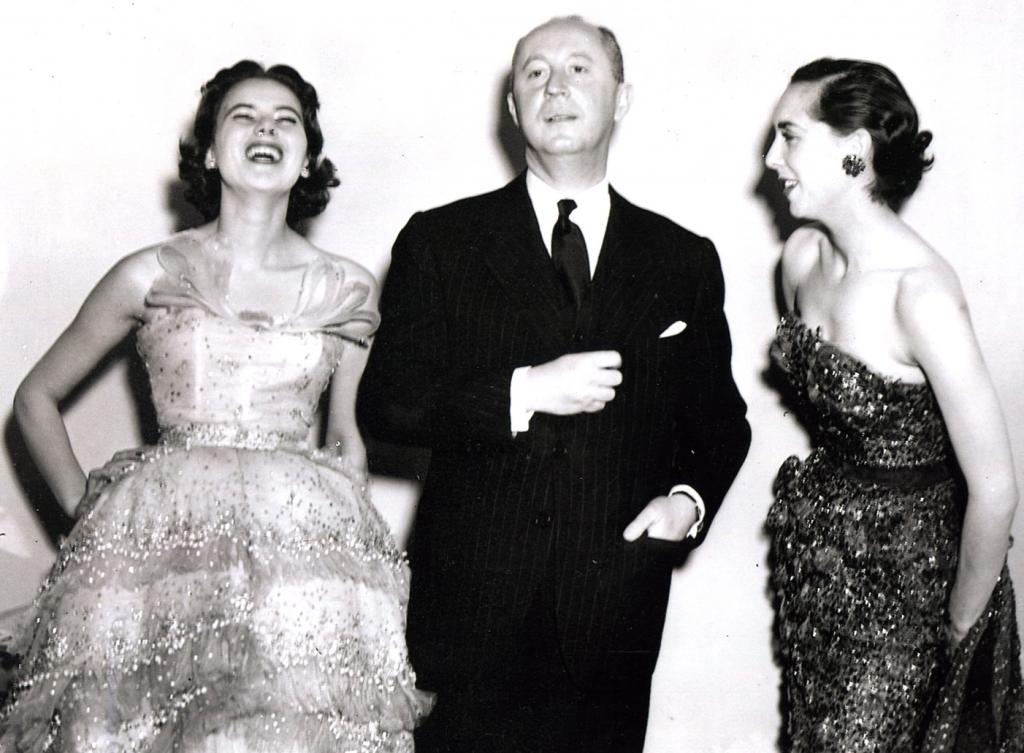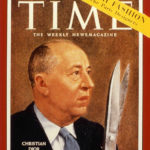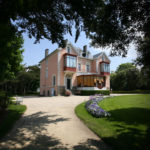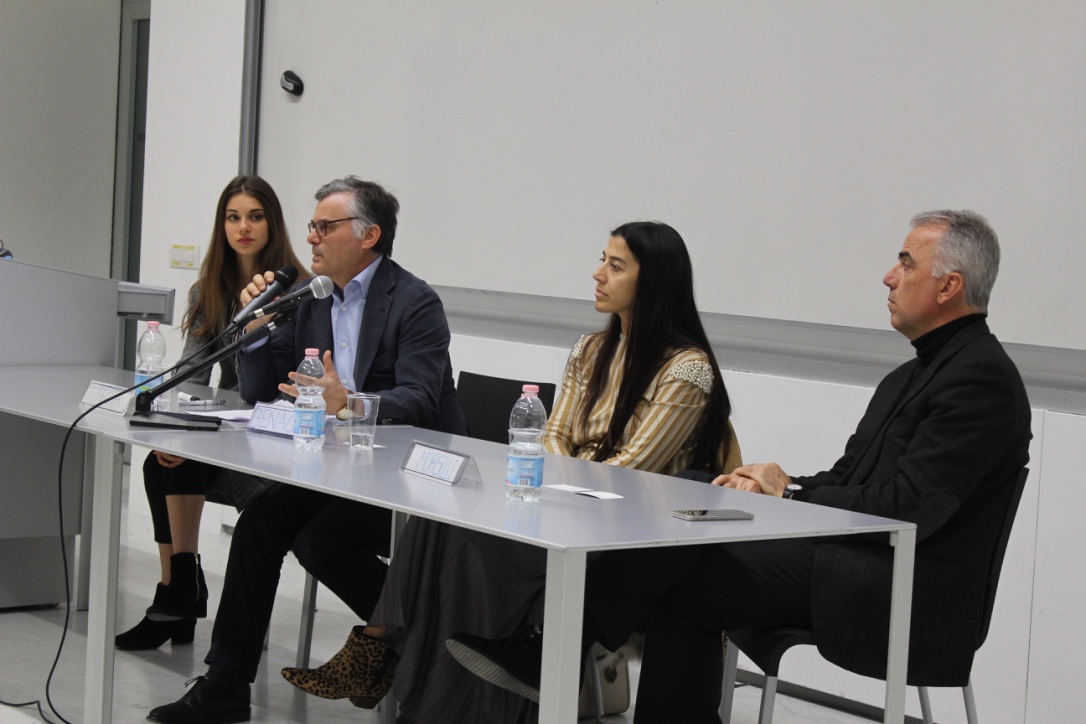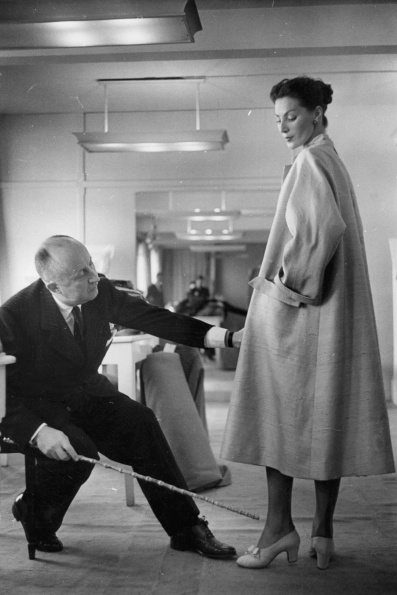“In a time dark as our own, where luxury consists of guns and airplanes, our sense of luxury must be defended at all costs. I can’t hide the fact that it is against the natural world trend, but I believe that in it there’s something essential. Anything that is against the reality of the simple covering or feeding is luxury; the culture we defend is luxury.”

It was 1946. The Second World War was just over and everyone desired some fresh air to breathe. When Christian Dior, or better his “Siamese twin” as he used to call himself as a couturier, opened his maison at the number 30 of Avenue Montaigne in Paris, a new wind started blowing, cooling and enveloping at the same time. The choice of the location was driven by chance: he was very superstitious, and he found a tarot card in front of that door, which a fortune-teller read as a presage of future success. She also predicted that, when the very first clients would have come, the works for preparing the atelier wouldn’t have been completed. In fact, at the arrival of the first customers, he was still laying the carpet! Superstition would accompany the entire career of the French couturier: he always had tarot cards read before a runway and he considered the Lily of the Valley, the main essence of the future perfume Diorissimo and name of one of his creations, as a talisman. Moreover, he used to offer Lilies to his guests before a catwalk and to sew withes of it on the hem of his dresses. There was always a reference to that flower in his collections and there was always a red gown because he considered red his lucky colour.

Maybe all this may seem odd but perhaps he might be right considering that, in one year, the so called New Look blossomed in all its majesty, declaring the beginning of a succession of successes. In fact, at 10.30 am on February 12th, his first Haute Couture collection, Corolle, walked the runway, leaving a contrail scented Miss Dior. The name of the collection inspired by the fact that his aim was to make women resemble flowers, while the fragrance, even if so delicate and inspiring joie de vivre, was dedicated to his sister, Catherine, who was enlisted in the French resistance and survived the Ravensbrück concentration camp.

The New Look owes its name to the Editor-in-Chief of Harper’s Bazaar, Carmel Snow, whose comment after the catwalk was: “It’s quite a revolution, dear Christian! Your dresses have such a new look!” But actually, this collection wasn’t a real fashion innovation, as monsieur Dior hated too sudden changes. It consisted in a merge between modernity and the nostalgic Belle Époque style, Victorian, inspired to his mother outfits and to the architecture of his childhood house in Granville, that is, the sturdy structures loved by Normans. It was new only if compared to the latest past. It brought back to rules and bon ton, to classic and feminine lines, drawing rounded shoulders, lengths and volumes in the bottom, wearing silhouettes made of tiny waists and sensual bustiers, which let breast and hips to stand out. It just happened that his personal taste coincided with the one of the time.
The real exploit was to break with the restriction, gravity, rationing and gloom of the war years, by means of pastel colours, especially tenuous pink in contrast with grey, inspired by his first house colours, and fabric quantity. In fact, Dior realised long skirts, when there was cloths scarcity, thus it was said that he was killing the economy. This was the reason why the princesses of England, Elizabeth and Margaret, could never wear one of his creations, because the copious use of cloth, such as the use of 30 meters of fabrics for a single gown, was considered unpatriotic. Therefore, even if Dior said he wanted to make revolutions without blood scattering, his New Look injured someone, generating agitation: the women who wore shorter garments, especially to be comfortable at work, were criticised, while the ones who wore longer gowns were considered offensive, because in front of the misery of the war they spent a lot for those retrograde dresses, bringing back to the idea of the woman as a housewife and nanny, and to class differences, just eliminated by the war.

By the way, focusing on Dior as a couturier, it can be said that among his main characteristics there were the love for tradition, learned chez Lelong, and proportions, taught him by Piguet, together with the art of delete. According to Pierre Cardin, Christian wasn’t a complete designer: a designer should know how to draw, cut and sew, while he used to sit on his chair telling to his designers what to modify. He had not the technic, but he was the charge for a person with the technic.
To realize his innovative style, he modified a mannequin by means of a hammer, due to the fact that the original one was too rigid and didn’t allow him to obtain the softness he wanted for the waste. A typical evening dress by Christian Dior was developed as an 18th century royal attire, underlying his traditional approach in the fashion production, in contrast with his art tastes, favouring avant gardes such as the first Cubism and Surrealism. The structure of his gowns was made up by a bustier with flexible sticks and a skirt on the hem of which there were small leads, to make it fall à plombe. The skirt consisted of different layers: the exterior one, flawlessly embroidered in its interior part, was followed by a muslin layer, in order to make the embroidery stand out and to avoid that the tenuous colours resembled faded, and by a taffeta one, to make the dress less transparent. Finally, to enhance the colours without influencing the dress shades, 3 layers of ivory tulle were used, and the work was always completed by a cool, light and silky crêpe fabric petticoat.
“I believe that designers are the last depositary of the wonderfulness. In a certain way, they are the masters of dreams, the only ones that can transform people since the Cinderella’s fairy retired.” said Christian Dior. What astonish in his figure, is that even if he worked for his maison only 10 years before his death, occurred in 1957, he was the one who defined the style, while the designers who followed in the subsequent 60 years were just able to add some personal touches. Furthermore, he was an anticipator in the way he run his firm: he realized that the whole outfit should be produced in a single house, to allow women to buy everything in just one shop. Moreover, he was the first designer to take advantage of an advertiser and to introduce the seasonal collections, that is spring, summer, autumn and winter collections, introducing a new trend every 6 months. In 1947 he brought back French fashion at the leadership role it deserved, and just at the end of 1949, his production represented the 75% of all the country’s exports in the fashion industry, and the 5% of the whole national exportations. He did all these, and he was not a manager, he was not a complete designer, he was just a talented man.

And if you want to know more about the Maison‘s history in the 60 years following Christian Dior’s death, don’t miss the next article!
by Laura Gaudioso

